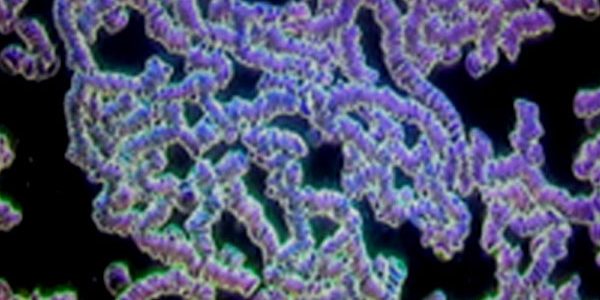PEMF and Sports Performance Enhancement

Athletes can be very superstitious creatures. Many have 'rituals,' repeated things they do, eat or wear, which they believe or hope will improve their performance or the outcome of an event. As one thinks, so it is to a degree. Therein lies the placebo effect. If you think something will make you improve, it can… and will to the degree of that belief… therein lies an example of the placebo effect. The placebo effect is real and demonstrable in scientific studies. That’s why there are double-blind studies with humans to rule out the placebo effect in any study. Neither the subjects or the staff conducting the research know who is receiving the real or the sham treatment.
Animals - on the other hand, are said to be unaffected by the placebo effect. The world of horse racing readily adopted PEMF… and with some notable success. Six out of the last eight Kentucky Derby winners have incorporated PEMF as a part of their training. The Melbourne Cup winner in 2017, Rekindling, utilised pulsed electromagnetic therapy. Now every horse in most races have had PEMF used on them. Horses, like humans are susceptible to the clumping of red blood cells, which will be discussed in a moment.
OXYGEN
One of the best methods to make an automobile engine more powerful is to turbocharge it. Essentially more air (oxygen) is forced into the engine. Fuel plus more oxygen creates more energy or power. The effects of a pulsed electromagnetic field on red blood cells are well documented and photographed using dark-field microscopy.
This is an image of red blood cells taken using dark field microscopy, which is well suited for the observation of live and unstained biological samples. These are red blood cells before a PEMF treatment.

The picture shows what is commonly called sticky blood, agglutination or the Rouleaux effect. Red blood cells sticking together like this is routinely found in both healthy and unhealthy individuals. There is no consistency or recognised patterns of 'stickiness' from day to day with, no clinically agreed upon reason. The conventional medical field looks for biochemical reasons so it can be treated with drugs. Other doctors and scientists see it is the result of a low cellular charge, which isn’t sufficient enough to repel the other likecharged cells.
The red blood cells have lost the necessary threshold potential charge to keep the cells separated. Each cell is like a battery with a negative inner and a positive outer charge on the cell membrane. If the outer cell membrane doesn’t have a high enough charge, then the cells will stick together as seen in the picture. Like charges repel each other, but if the charge isn’t at or above the necessary threshold, they will stick together. A clump of eight or more red blood cells stacked together reduces cellular efficiency by 50%. That’s a 50% reduction of not only in oxygen absorption, but also water and nutrients along with carbon dioxide and metabolic waste elimination.

This is a picture of red blood cells eight minutes after a PEMF treatment. The red blood cells began to separate after only a couple of minutes once they reach a certain threshold of charge.
This effect can last up to six to eight hours, sometimes more… sometimes less. It depends on the individual and many physical and lifestyle variables.
Your red blood cells were designed to deliver, feed and supply the body with oxygen and nutrients and at the same time get rid of wastes. In order to do this the most efficiently, the red blood cells need to have the greatest amount of surface area as possible. Maximum efficiency of the blood cells is achieved when all the surface area of the outer cell membrane is free to perform its functions.
The other important factor to note is that the red blood cells need to get to all tissues of the body. If they're stuck together in large clusters, then they're not able to pass through the microcapillaries of the circulatory system. Approximately 80% of the circulatory system consists of the capillaries.
It has been found that muscles work harder, longer, and recover more quickly when treated with magnetic field therapy. For the competitive athlete, this means more effective training and shorter rest periods between trainings. For the casual exerciser, this means less soreness the day after activity. For everyone, it means creating a healthier environment within the body – an environment less likely to succumb to injury.
Using a magnetic therapy system before physical activity has many benefits for the athlete. PEMFs stimulate a process called myosin phosphorylation, which is the process of energy production in the muscle. Phosphorylation produces ATP, which is essential for cellular energy. ATP depletion, which happens with strenuous activity, causes muscles to weaken and potentially spasm. Rest naturally restores ATP, assuming the body is healthy enough to replenish it. PEMFs restore ATP by stimulating the myosin phosphorylation process. In fact, through an increased motion of ions and electrolytes, magnetic fields can help cells increase their energy by up to 300%.
Exercise and muscle exertion also causes an increase in the heat stress or heat shock proteins, which prevent cell breakdown and wear and tear, as well as help speed recovery from injury. Active muscles are stressed muscles, and the more stressed a muscle is, the more heat shock protein it will produce. If you induce heat shock proteins in the muscle before strenuous activity, you reduce the subsequent tissue damage, helping to speed recovery. PEMF therapy is a gentle way to stimulate the production of such proteins.
Magnetic fields also increase the uptake of oxygen into the muscle. Research shows at least a 1% increase in local tissue oxygen uptake after PEMF treatment—enough to significantly enhance muscle performance and endurance. Magnetic therapies also increase circulation, further helping tissues get the nutrition and oxygen they need, while expelling the waste they produce.
Using a magnetic therapy system after strenuous activity can both greatly diminish soreness and reduce painful muscle spasms and cramping. The body has a somewhat limited repertoire of reacting to damage, injury, or illness.
All injuries produce swelling in the tissues, as does exercise itself. Swelling delays the ability of the tissues to be nourished with oxygen and nutrients. This is why you see athletes frequently being treated with ice packs. Ice packs reduce superficial swelling, but swelling or bruising deep in a muscle will not respond as well to ice. Conversely, PEMFs penetrate tissues deeply without risk to the superficial tissues. The PEMFs reduce swelling and speed removal of the blood in a bruise, leading to faster recovery and return to activity, competition or training.
From this, we can see that all athletes, competitive or otherwise, should be using daily PEMF treatments for preventative reasons and for overall health maintenance. In addition, the treatment of any injuries with PEMF's accelerates even subtle healing, allowing the athlete to be healthier, stronger and perform better.
PEMF provides athletes with many benefits when used before and after physical activity.
- PEMF aids in the oxygenation of the blood, which serves to improve performance and endurance
- PEMF improves blood flow and cell membrane permeability, which helps tissues get the nutrition and oxygen they need while aiding in detoxification
- PEMF stimulates the process of energy production and helps cells increase energy through more ATP production
- PEMF stimulates the production proteins to reduce heat shock, which helps to prevent cellular breakdown during sustained physical exercise
- PEMF helps eliminate toxins and lactic acid faster, which helps reduce soreness, muscle spasms, cramping and the breakdown of tissues after exercise
- PEMF penetrates deep within the body to reach all tissues and cells
- PEMF reduces inflammation leading to faster recovery and healing
- PEMF decreases the risk of injuries through improved circulation in the muscles

